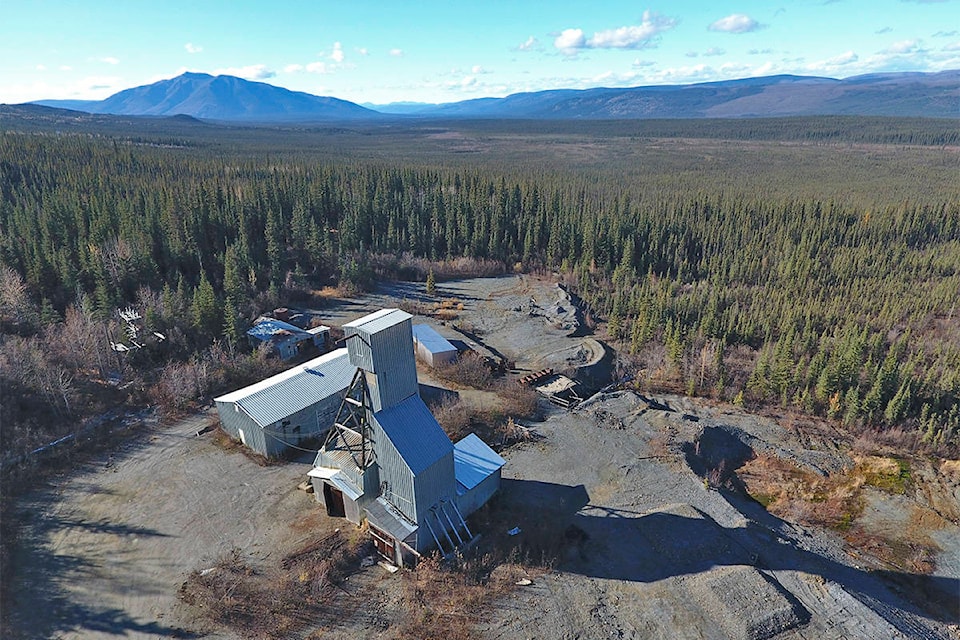A tiny friend is being used to solve a big problem.
Vancouver-based mining company Alexco Resource Corp – which also owns Elsa Reclamation and Development Company – is testing bacteria to help clean up the Silver King site at the defunct United Keno Hill Mine.
In a process not unlike how naturally occurring yeasts and their associated symbiotic bacteria are harnessed to create a culture which leavens (our beloved) sourdough bread, Alexco is using naturally occurring bacteria to help oxidize contaminants into a more stable form, says Linda Broughton, vice president of technical services for Alexco’s environmental arm.
To do this, the mine shaft is completely flooded. Two wells – an injection well and a recirculation well– tap into the flooded shaft. Depending on conditions, “dissolved organic carbons” such as alcohol or molasses – tasty sugars bacteria like to eat – are introduced into the flooded chambers through the injection well. A pump is installed in the recirculation well, which runs while the injection process is happening, helping to spread the sugars throughout the mine.
The mine is then sealed off from oxygen and the bacteria – which are naturally present in the underground shafts – are left to hang out, eat and grow in an environment which is favourable to them.
The bacteria take up dissolved sulphates – a byproduct already present in the water – and convert them into sulphides. Sulphides want to bond with the dissolved metals also present, such as zinc and cadmium, Broughton explains via email.
“The sulphide seeks to bond with the dissolved zinc and cadmium and other metals in the mine. When sulphides bond with these metals, it creates stable solid particles known as precipitates that will settle out of the water to the bottom of the mine pool as sediment. In this way, a considerable percentage of the cadmium and zinc in the mine pool water are removed from the water and kept in a stable form within the mine,” Broughton says.
The project, begun four years ago at the site, is a pilot, says Broughton.
“The first couple of years of our pilot project were focused on getting the operating conditions right for the specific site, allowing the workings to flood and feeding the bacteria to develop the reducing conditions for the treatment,” she says.
Now, Alexco is hoping “to demonstrate the application of this well recognized science to an old mine working,” says Broughton.
As the process continues more food for the bacteria – those “dissolved organic carbons” or sugar – needs to be added every few months to every few years “to maintain the low levels of cadmium and zinc levels in the mine discharge water,” she explains.
As in making sourdough starter, different strains of bacteria may be at play, but genetic profiling by the company “suggests that species from the Desulfosporosinus genus seem to dominate the sulphide-producing bacteria in the mine workings,” says Broughton.
This naturally occurring process was first observed 30 years ago at a mine in Norway, says Broughton. This is the first time it has been tried in the North, in “such a cold climate,” she adds, which is why this pilot project is so unique; the conditions to make it work have to be just right.
Silver King was one of the first working mines in the Keno Hill district, opening in 1913. The site is part of the defunct United Keno Hill Mine, which was abandoned by its previous owners, leaving the messy business of remediating the silver-lead operation to the federal government.
The company’s complete remediation plan was put forward in late September 2018. That plan, which is under review by the Yukon Environmental and Socio-economic Assessment Board (YESAB) ended its public comment period March 27. The treatment being piloted for use at the Silver King site is just a small portion of that overall proposed project.
The Silver King site already has an existing water license, says Broughton, so they were able to use the mine to test this procedure out. The water downstream is already being treated conventionally – a process which uses lime – while the water upstream is testing out the in situ process. Although it might not be necessary, all the water gets treated with the conventional method before it gets discharged, to ensuring they are always “in compliance” with regulation, she says.
Alexco took over the reclamation of – and the mineral rights to – the United Keno Hill Mine area in 2006, and is responsible for the care and maintenance of the site. Part of that arrangement includes cost sharing with the federal government and Alexco has put $10 million of its own company money on the table towards the first five years of the reclamation project, with $65 million in federal money expected to be spent in the same time period, Broughton said.
Alexco is also currently mining in the area, even as it reclaims the old sites.
The total cost to reclaim the Keno Hill Mining District is projected at $111.5 million in taxpayer money.
Contact editor at editor@yukon-news.com
